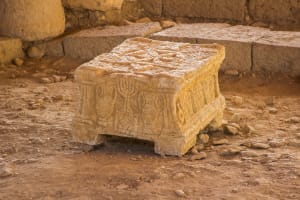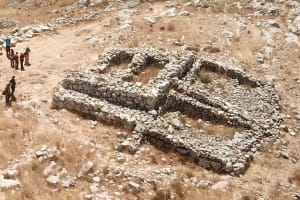Indigenous, not colonial - Why the foreign narrative fails for the Jew

Among the most damaging distortions of modern discourse is the claim that Jews are newcomers to the land of Israel. It is repeated with ease, in protests, in classrooms, at international forums, as though it were settled fact. Zionism is cast as colonialism. The Jewish presence is reframed as occupation. Somehow, the people who carried this land in their prayers for millennia have become strangers in the story they wrote.
This is not merely inaccurate; it is an injury to conscience.
Colonialism is rule by a distant metropole over a subject land for the metropole’s benefit. It exports an external language, installs an external bureaucracy, and extracts value for an external capital. Zionism was none of these. It was the civic expression of a spiritual ache, the collective return of an indigenous people to self-government in the country where their scriptures were set, their cemeteries lay, and their prayers pointed. Its language was their own; its capital was not abroad.
Few peoples on earth can show a claim so densely layered in memory, scripture, archaeology, language, and longing. Long before Rome, long before Islam, long before any European empire set eyes on the eastern Mediterranean, the people of Israel lived here, planting vineyards, burying their dead, naming their hills, and weeping by their rivers. The names remain: Hebron, Shiloh, Jerusalem; they are not borrowed and not imposed. They were spoken by Jewish mouths, and written in Hebrew script, centuries before Arabic emerged as a literary and administrative language in this region.
The anchor in antiquity is empirical. The Tel Dan and Mesha stelae attest to Israel and Judah as named polities in the Iron Age. The City of David yields fortifications, waterworks, and the Siloam Inscription that records the hewing of Hezekiah’s tunnel. Synagogues and Jewish communal buildings appear in mosaics and inscriptions from the Galilee to the Judean hill-country, including Beit Alfa, Hamat Tiberias, and Huqoq. The Dead Sea Scrolls preserve Hebrew and Aramaic texts, law, and liturgy that bind a people to a real landscape, with ritual calendars tied to Jerusalem and its Temple.
Exile is often described as two thousand years, yet the phrase misleads if it is taken to mean absence. Exile named a condition, not a vacancy. From the destruction of the Second Temple to the present, there was no moment without Jews in the land. Rabbinic centres in Tiberias and Sepphoris produced scholarship that shaped Judaism for all later centuries. Medieval letters preserved in the Cairo Geniza refer to communities in Jerusalem, Ramla, and the Galilee. Travellers’ accounts record Jews in Jerusalem, Hebron, and Safed. Burials continued on the Mount of Olives. Communities waxed and waned under conquest and neglect, yet the chain did not break.
By the sixteenth century Safed became a major centre of Jewish law and mysticism under Ottoman rule. Joseph Karo’s legal code was compiled there, while Isaac Luria’s circle gave rise to enduring liturgical and theological currents. In Jerusalem, Jewish quarters are recorded across centuries. In Hebron there were continuous Jewish residents except during intervals of displacement after violence, with returns documented thereafter. These are not sentimental claims; they are entries in ledgers, inscriptions on stones, and names in travellers’ journals.
The modern return was civic, not imperial. From the nineteenth century onwards, land was purchased, often at high prices, from private holders. Hebrew moved from the prayer book to the schoolyard, the market, and the courtroom. The elected institutions of the Yishuv governed daily life. The legal framework recognised Jewish national restoration through the Balfour Declaration of 1917, the San Remo Resolution of 1920, and the League of Nations Mandate of 1922, which all affirmed the reconstitution of the Jewish national home. The continuity clause in the United Nations Charter preserved these obligations. Whatever one’s politics, the historical and legal record establishes that this was not a colony staffed by a foreign metropole; it was a homecoming structured in public law.
Liturgy and practice preserve the line of belonging when documents grow dull. Three times daily the Amidah turns the worshipper toward Jerusalem. Psalm 137 ties the rivers of Babylon to a remembered Zion. The words at the end of the Passover meal and the close of Yom Kippur, ‘Next year in Jerusalem,’ hold a dispersed nation to a concrete geography. A language of scripture returning to the marketplace and the magistrate’s bench is not the hallmark of colonisation. It is the signature of return.
It is common to say that Jews returned after two thousand years of exile. This is true, though not true enough. Jews never left entirely. Families remained. Study houses kept their lights. Pilgrims came and went. Under late Ottoman and British administration, the country also saw in-migration from neighbouring provinces at the same time as Jewish return gathered pace. The demographic story is mixed and reciprocal. What it never shows is a land emptied of Jews and then filled by foreigners.
In this light, the charge of colonialism fails on its own terms. No foreign metropole directed policy or took tribute. No external language replaced a native one. No alien bureaucracy governed on behalf of a distant capital. The movement that culminated in statehood was a local majority seeking self-determination where its ancestral culture had always located its centre. To describe that as colonial is to erase both definition and evidence.
This matters, because the lie of Jewish foreignness is not an academic error. It underwrites a political campaign to delegitimise Jewish sovereignty altogether. If Jews are invaders, then violence, rejection, and the denial of coexistence can be baptised as resistance. If Jews are natives, the moral alibi fails. Perhaps that is why the distortion is repeated.
Truth is patient. Stones remember builders. From winter to harvest, all waited; from border to border, all watched; from prayer to place, all came.
Selected references
Archaeology and epigraphy:
Tel Dan Stele, c. ninth century BCE; Mesha Stele, c. ninth century BCE; Siloam Inscription from Hezekiah’s tunnel; excavations and reports from the City of David; synagogue mosaics at Beit Alfa, Hamat Tiberias, and Huqoq.
Texts and liturgy:
Dead Sea Scrolls, third century BCE to first century CE; the Amidah’s orientation to Jerusalem; Psalm 137; the formula ‘Next year in Jerusalem’ in the Passover Haggadah, and at the close of Yom Kippur.
Continuity and travellers:
Cairo Geniza letters referencing communities in Jerusalem, Ramla, and the Galilee; medieval and early-modern accounts of Jews in Jerusalem, Hebron, and Safed; records of continuous burial on the Mount of Olives.
Ottoman to Mandate and international law:
Balfour Declaration, 1917; San Remo Resolution, 1920; League of Nations Mandate for Palestine, 1922; United Nations Charter, Article 80.

Ab Boskany is Australian poet and writer from a Kurdish Jewish background born in Kurdistan (northern Iraq). His work explores exile, memory, and identity, weaving Jewish and Kurdish histories into fiction, poetry, and essays.
You might also like to read this:
















